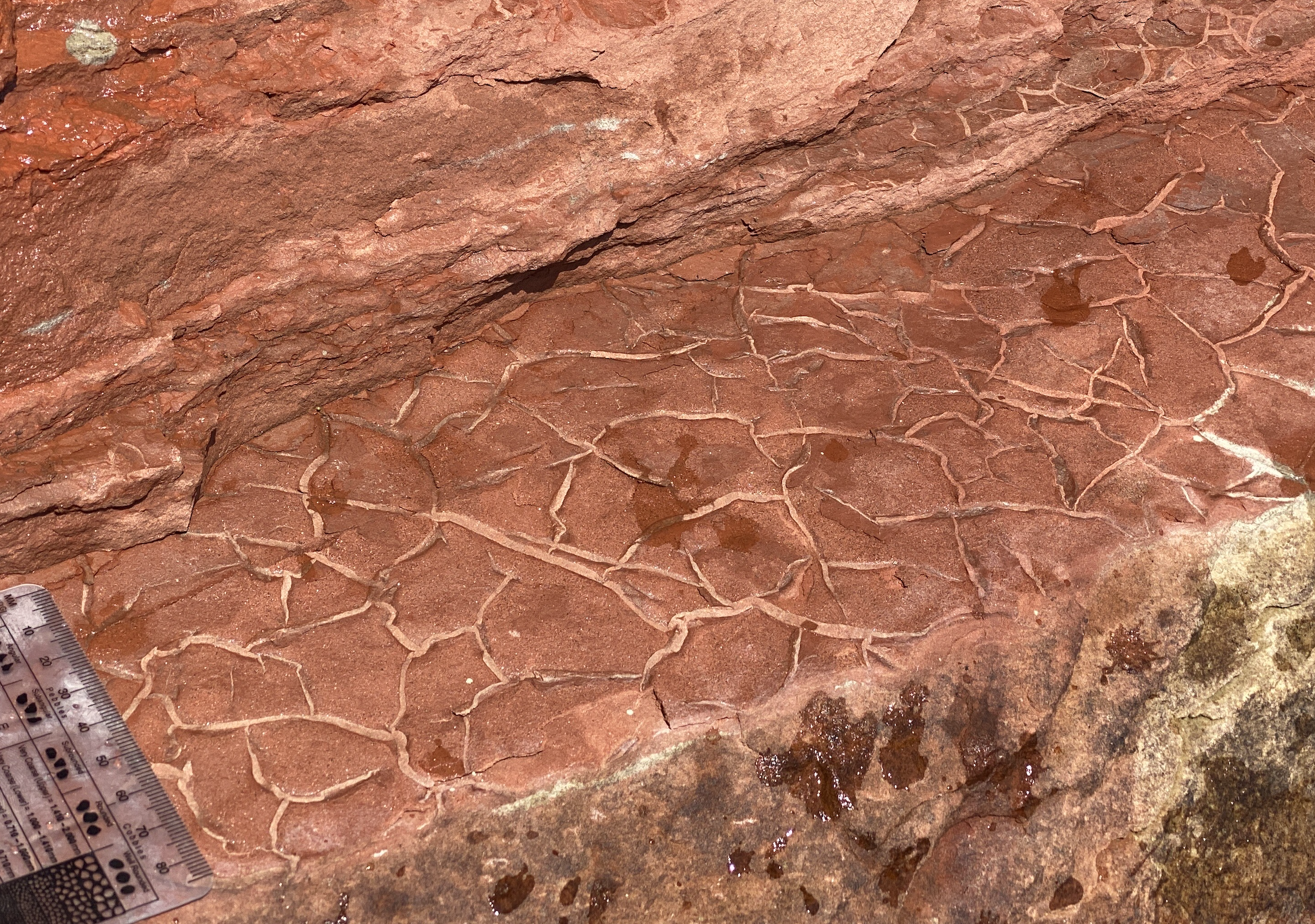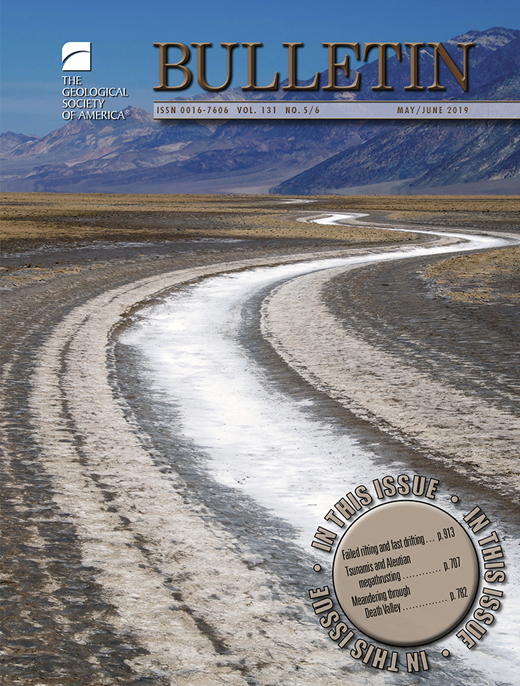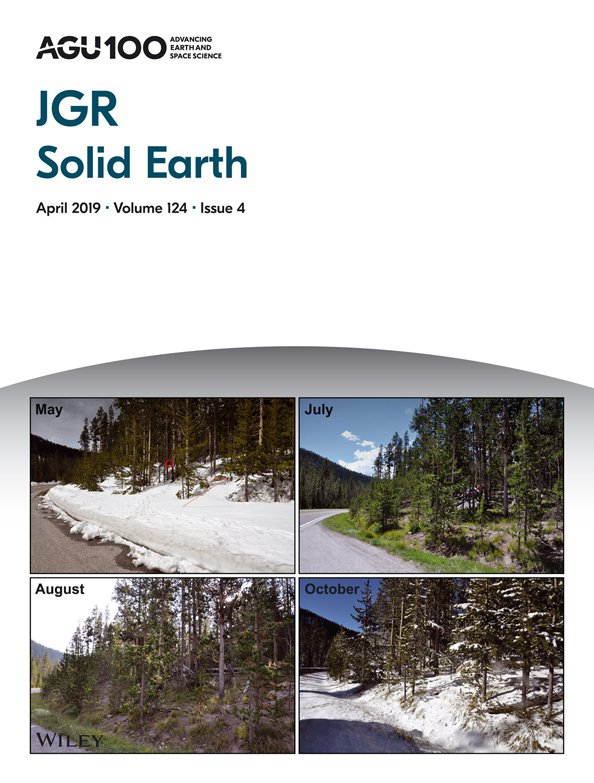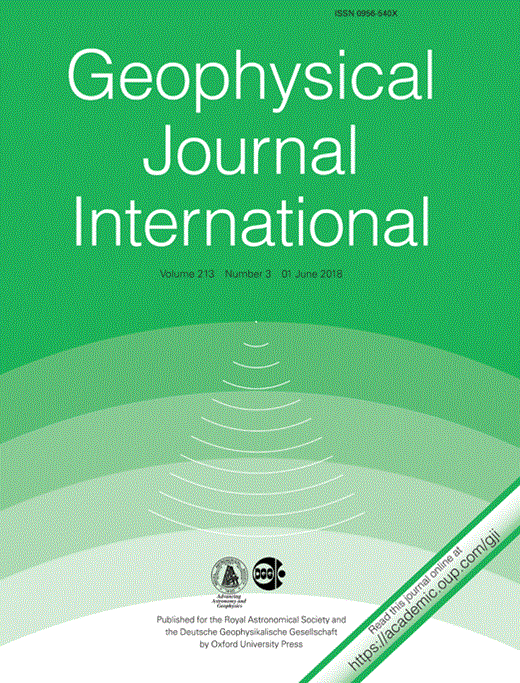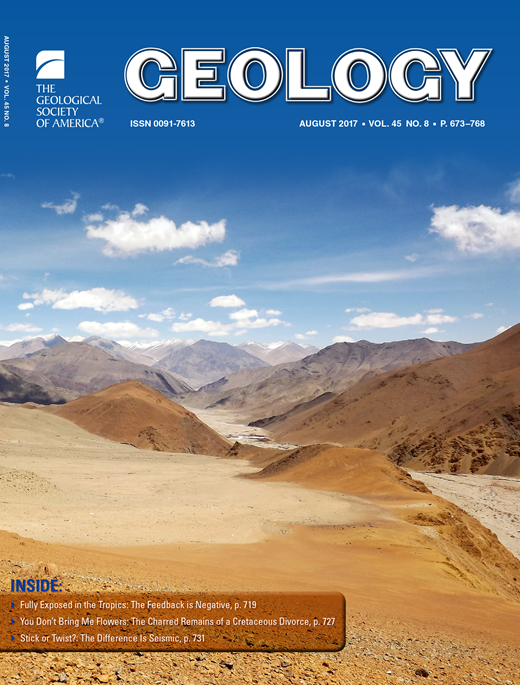
Shatter cones developed in an amygdaloidal Keweenawan basalt flow within the Slate Islands Impact Structure
One powerful way we can learn about the ancient history of Earth and other bodies in the solar system is through study of the magnetization of planetary materials. Earth’s internally-generated magnetic field is a defining characteristic of our planet that shields us from dangerous solar particles. When rocks form, they can record both the direction and strength of magnetic fields as a magnetization that can be preserved for potentially billions of years. Ongoing research in the Earth and planetary sciences seeks to understand whether the magnetization of extraterrestrial materials (including lunar rocks and meteorites) are the result of long-lived fields internally-generated by planetary bodies, or transient magnetic fields generated by impacts. One of the processes advanced as an explanation of sometimes enigmatic magnetizations observed on planetary surfaces, as well as in lunar and meteorite samples, is known as shock remanent magnetization. Meteorite impacts lead to high pressures and the short duration shock can lead to the acquisition of new magnetization in the presence of a magnetic field. This context provides strong motivation to understand shock magnetization within impact basins on Earth both in relation to its acquisition from Earth’s internally-generated field as well as potential impact-generated fields.
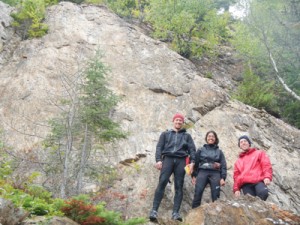
Luke Fairchild, Sonia Tikoo and Nick Swanson-Hysell standing in front of a large composite shatter cone developed in target rocks of the Slate Islands Impact Structure.
The most suggestive evidence for the presence of naturally occurring shock remanent magnetization (SRM) on Earth is from the ca. 30 km diameter Slate Islands impact structure in northern Lake Superior where there is a pervasive magnetic overprint. This distinct impact-related magnetization played an important role in the discovery that the structure formed as an impact crater (Halls, 1974). Our research has sought to test the hypothesis that that the secondary magnetization within the Slate Islands is an SRM. Using abundant paleomagnetic data generated from the target rocks, rock magnetic experiments that have imparted shock and pressure (Tikoo et al., 2015; Bezaeva et al., 2016), and the results of hydrocode numerical modeling, we have found that the impact-related magnetic overprint is thermal in origin. Any modification of the magnetization from shock effects has been overwhelmed by thermal overprinting. The uplift of rocks from depth combined with shock-related heating led to the observed impact-related magnetization as the rocks cooled following the impact event. We conclude that thermal, viscous, and chemical processes will overwhelm the effects of shock in the vast majority of settings — particularly due to the low acquisition efficiency of pressure-related magnetization
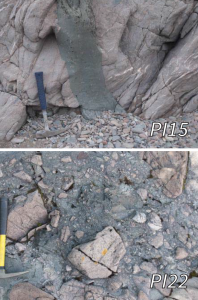
Two examples of breccia dikes within the Slate Island impact structure. The thin PI15 dike and the thicker PI22 dike which contains boulder-size clasts.
Our work in the Slate Islands has also shown that well-aligned magnetizations of impact-formed injected breccias within the Slate Islands crater require that the large-scale structural modification, including the formation of the ~7 km diameter central uplift, must have all occurred within a matter of minutes (Fairchild et al., 2016). These results are based on the dikes being in their final structural state when they cooled and the data represent a rare opportunity where geophysical data are able to capture rapid structural change that occurred hundreds of millions of years ago.
This material is based upon work supported by the National Science Foundation Division of Earth Sciences under Award No. 1316395. Any opinions, findings, and conclusions or recommendations expressed in this material are those of the author and do not necessarily reflect the views of the National Science Foundation.

